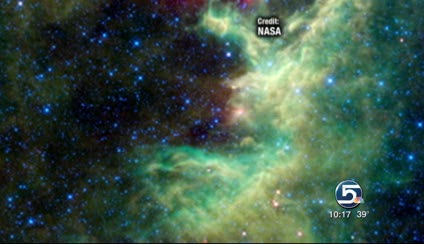Estimated read time: 3-4 minutes
This archived news story is available only for your personal, non-commercial use. Information in the story may be outdated or superseded by additional information. Reading or replaying the story in its archived form does not constitute a republication of the story.
LOGAN — An instrument designed and built in Utah is about to give astronomers, and the general public, an entirely new view of the universe.
NASA has just released more than a million images captured by the W.I.S.E. satellite telescope. W.I.S.E., the Wide-field Infrared Survey Explorer, was born in the Space Dynamics Laboratory in North Logan, part of the Utah State University Research Foundation.
WISE captured more than 2.7 million multi-color images.
"It's basically an atlas to the whole sky, since we've mapped the whole sky," said W.I.S.E. project manager John Elwell.
The satellite telescope was launched by NASA in December, 2009. It captures images using infrared light, a technique that requires the cameras to be kept extremely cold with frozen hydrogen. W.I.S.E. was always intended to have a very short useful life. It operated for only 13 months before the nitrogen warmed up and put the cameras out of commission.
W.I.S.E. "completed its mission but the data is still being processed," Elwell said. "The first half, about 57 percent of the data, is being released to the public and will be available online."
What WISE saw
| Space Object | Number Observed | Number Newly Discovered |
|---|---|---|
| Solar System objects | 155,782 | 33,380 |
| Near-Earth objects | 564 | 133 (21 potentially hazardous) |
| Comets | 115 | 17 |
| Brown Dwarfs | 94 | Over 500 more candidates |
| Ultra Luminous Infrared Galaxies | 44 |
#stats_table
About a million more images are expected to be released a year from now.
Until this week, NASA had released only one image a week. Many of the 61 previously-released images show spectacular features in space, some that have never been seen before. The new batch of approximately 1.4 million multi-color images is accessible by anyone through the Internet.
But to see the images in color will require processing in a home computer. "It's primarily intended for astronomers," Elwell said, "although anyone's welcome to access it."
In the last few years, the Hubble Space Telescope has thrilled space buffs and ordinary citizens with dazzling pictures of previously unseen sights in the universe. But infrared light is invisible to Hubble, so many objects in space are beyond its visual grasp.
In its short lifetime in space, W.I.S.E. discovered 133 previously unknown near-Earth asteroids, 21 of which are potentially hazardous. It found 17 new comets and 94 cool, diminutive stars known as brown dwarfs. In all, W.I.S.E. detected more than 350 million objects including 155,782 within the solar system.

- Entire WISE data-base (for computer-savvy people with a lot of time on their hands)
- WISE multimedia gallery (for others who just want to revel in the beauty of space; contains 61 multi-color images from WISE)
#photo_galleries
The vast new collection of images is expected to be a major new tool for astronomers. "They are very excited about this," Elwell said. "This will help infrared astronomers do their research for decades into the future."
W.I.S.E. differs from Hubble in another important respect: each image gives a much wider view. Hubble's view is narrow and highly sensitive to visible light. It's designed to look deep into space at far distant objects that are generally dimmer. W.I.S.E., on the other hand, was designed to capture wider images that catalog the entire universe as seen from Earth.
"You need an atlas to know where to point the Hubble," Elwell said. "And that's the purpose of the W.I.S.E. instrument."
The enormous new data-base of images may be less thrilling to non-professionals because of the way the data is stored. Each of the million-plus images is stored in 4 black-and-white versions, each taken with a different camera. The four cameras are sensitive to four different colors of infrared light. To see each image in all its glory, a space-buff would have to download all four black-and-white images and then use processing techniques to combine them into a single picture.
It's basically an atlas to the whole sky, since we've mapped the whole sky.
–John Elwell
"Anyone with basic computer skills can do that," Elwell said. "But for the astronomer to do science, they need the images separate."
He doesn't discourage space buffs and computer nerds from trying. "To find some of the more stunning pictures may be a little bit of a needle in a haystack," Elwell said. "But then astronomers are pretty persistent people. and amateurs in particular I think would probably enjoy the search."
Email:hollenhorst@ksl.com








